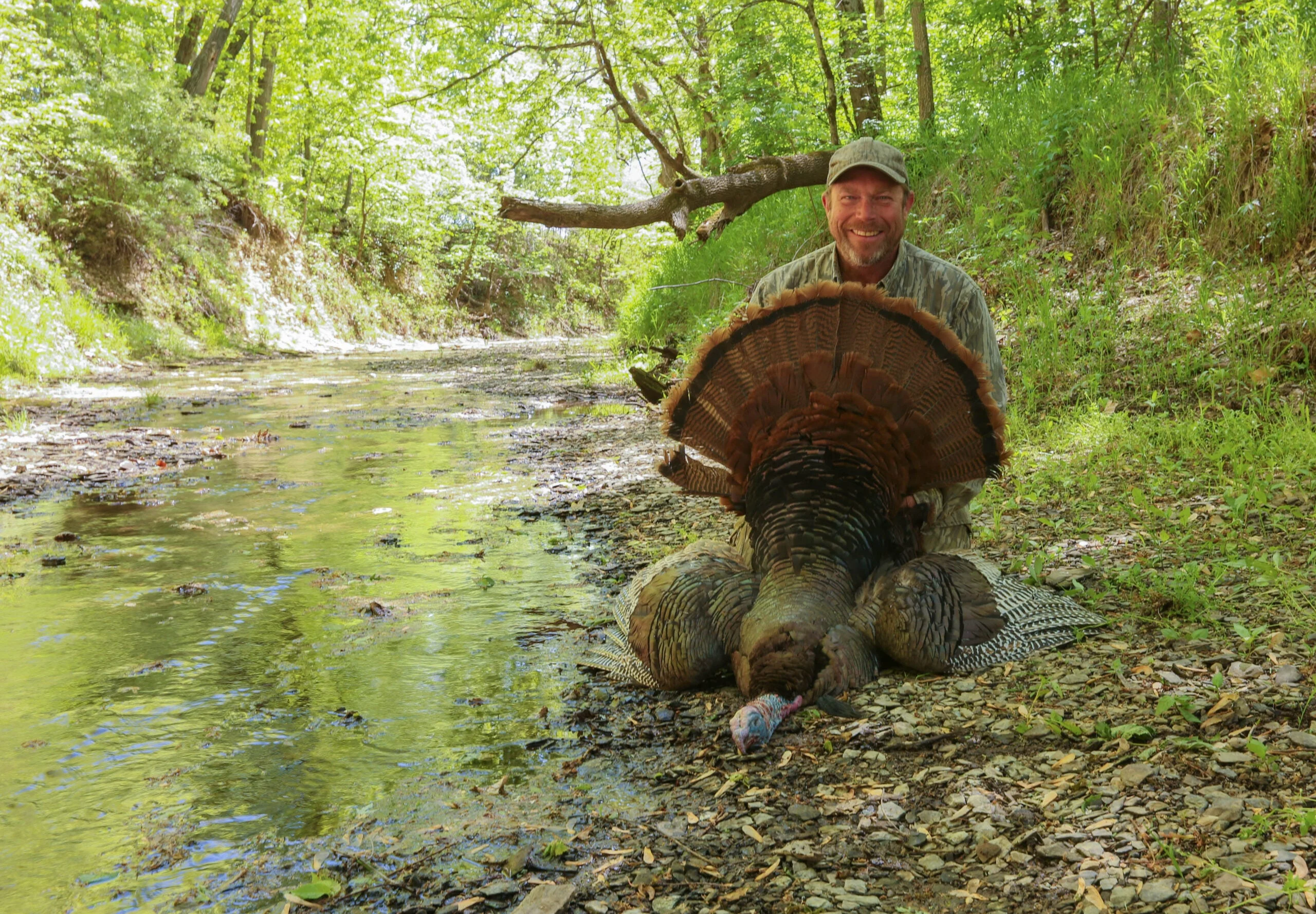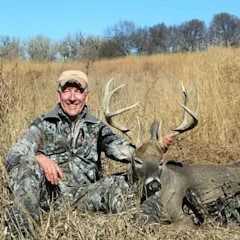_We may earn revenue from the products available on this page and participate in affiliate programs. Learn more ›
_
This Wednesday is the first day of the Indiana turkey season, where a strong gobbler flock should make for an action-packed opening day. It is also F&S’s Best Day of the Strut No. 3—partly because our expert, Tom Weddle, loves to hunt the Hoosier State opener but also because this time frame means good hunting for a host of states with mid-April openers. What if your state doesn’t open until late-April or May? No problem, you can put Weddle’s advice to use no matter when your state gets started.
The reason Weddle likes the opener—regardless of when that opener falls—is simple: He believes public-land spots simply hunt better before the birds have heard a lot of calling or dealt with many hunters. You can get some good hunting-camp debates going about how “smart” turkeys are—whether they get “call-shy” or not—but this much is indisputable: You can’t call up a tom that’s already in someone’s freezer. If there’s a better motivator to hunt the opening days of the season, I can’t think of it. But there are some tricks to being successful in those first days, and Weddle was happy to share them with us.
**Related: The Best Days of the Strut: 7 Must-Hunt Dates for the 2024 Turkey Season
**
Learn how to subscribe to the new Field & Stream magazine here!
The Pro: Tom “Doc” Weddle, Indiana

Weddle poses with nice Indiana gobbler. Tom Weddle
Doc Weddle has been chasing turkeys since 1983 and devotes two months of every spring to pursuing gobblers in as many as a dozen states. In addition to hunting in his home state of Indiana, Weddle travels widely enough to have notched 47 Grand Slams, seven same-season Double Grand Slams, two Royal Slams, and four U.S. Super slams. Weddle is also a successful call-maker and has published four books on turkey hunting
.
The Strut Stage: Peak Breeding
Weddle says the turkey strut is in full swing when the season opens in his home state of Indiana. “Winter flocks have broken up and toms are now roosted with hens or are at least close to them. This usually results in great gobbling on the limb and shortly after fly-down. Then things quiet down as toms switch to strutting and drumming to attract nearby hens. That said, toms like to hear themselves gobble, so they’re likely to pipe up at any moment, whether they’re with hens or not. Lots of hunters give up quickly after that initial round of roost gobbling dies off, but I don’t,” says Weddle. “Hens will often slip off to lay an egg mid- to late-morning and toms can be vulnerable again.”
Expert Tactic for April 17: Follow a Flock to Tag a Tom

A tom may have hens now at fly-down, but if you stay close, he may eventually split off and come strutting in to you. Paul/Adobe Stock
While some hunters shrug and give up when breeding is at its peak—when every tom seems to be henned up—Weddle has none of that. “I chose this day because it’s the opener in Indiana and there are simply more gobblers on the landscape now, but also because toms haven’t had many encounters with hunters yet,” he says. “My favorite technique now is to try and stay tight to the flock—and I’m generally dealing with multiple birds now, even though winter flocks have broken up—by listening and shadowing the birds.” Weddle says that he tries to blend in and almost become one of the flock by biding his time and moving his setups incrementally and often. “Basically I’m trying to create the illusion of a lone hen over in the bushes doing her thing, and eventually that scenario often succeeds in coaxing a gobbler to leave his other gals and come looking for me. Often the drive to gather up additional girlfriends is just too strong for a bird who only gets to breed hens for a few short weeks every year.”
Weddle ups his odds tremendously through a thorough regimen of preseason scouting. “I’ll spend hours learning about flock structure and the number of hens, jakes, and toms and how they’re using the area,” he says. “I’m keenly aware of the best food sources and where hens are scratching regularly to find food. I also want to know where birds roost; while Easterns don’t sleep in the same spots from night to night, they do have favored areas, and by putting birds to bed the night before I can up my odds considerably,” he says.

Weddle has taken toms from nearly every state where it’s possible to do so. Tom Weddle
If Weddle roosts a tom, he’ll sneak in an hour before fly-down and–this is important–he doesn’t make a sound until he knows the tom is on the ground. “I hunt a lot of public land and don’t want to get a bird gobbling hard to attract other hunters. Ideally I’m within 100 yards of the roosted tom and between him and any nearby hens. If my initial attempts fail, I go into stealth mode and maintain contact with the turkeys as long as I can. I may circle out ahead of them to a preferred feeding area and wait, or just tag along in hopes that the birds will eventually stop in a place where I can find a good setup. I don’t care how long it takes—an hour or all day—I’m there for the long haul, hanging on the periphery and hoping I can get a henned-up tom to change his mind and come check me out.”






